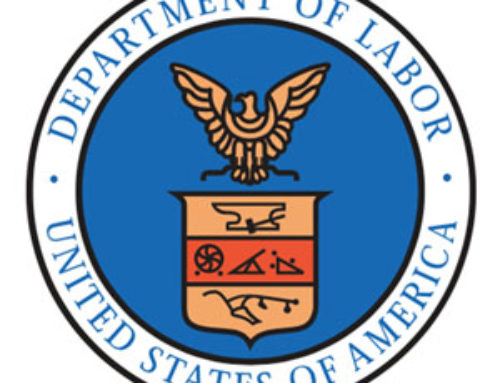
Last summer, Washington blueberry growers using H-2A labor were hit with a 50 percent wage increase midharvest. But when a grower challenged the methodology the U.S. Department of Labor used to set the prevailing wages, the federal court judge ruled against the grower and placed the blame, in part, on growers’ poor level of response to the wage surveys in the first place.
The situation left agricultural employers and the groups that represent them even more convinced that prevailing wage surveys — which appear to be pushing wages up significantly every year — need to be replaced with a new method to set minimum pay for farm labor.
Several regional and national groups that represent agricultural employers have argued against the use of wage surveys used by the U.S. Department of Labor to set prevailing wages, one of the floors for H-2A worker compensation that also affects the domestic labor market. They urged the department to adopt more market-driven approaches.
“The premise of using surveys to determine agricultural wages is a flawed system,” said Allison Crittendon, director of congressional relations for the American Farm Bureau Federation. “It presents immense challenges for the agriculture industry when wage rates can increase drastically from year to year, or even in the middle of harvest.”
In 2019, the Department of Labor proposed modifications to several aspects of H-2A regulations, as did legislation called the Farm Workforce Modernization Act. Both included attempts to reform wage-setting methodologies.
The bipartisan legislation passed the U.S. House of Representatives in December but not the Senate. A decision on the regulatory changes by the Labor Department is due soon, said Michael Marsh, president of the National Council of Agricultural Employers.
“Wages should be based upon what a willing grower and a willing worker determine those wages ought to be,” Marsh said.
Wages in court
The court case that called prevailing wage methodology into question followed the Department of Labor’s move in July 2019 to increase prevailing wages for Washington blueberry harvest from 50 cents per pound to 75 cents. Zirkle Fruit, one of the state’s largest blueberry producers, challenged that wage mandate in federal court in Eastern Washington. A group of producers also filed a federal suit objecting to similar but less drastic increases in apple harvest wages.
U.S. District Court Judge Salvador Mendoza Jr. ruled against producers in both cases and pointed the blame partially back at growers statewide for lack of participation in state wage surveys. The Labor Department contracts state agencies — in Washington’s case, the Employment Security Department — to conduct wage surveys that provide the basis for the prevailing wages.
“That was an aspect of the ruling that we found perplexing,” said Brendan Monahan, the attorney who represented Zirkle Fruit, a Selah, Washington, producer, in its lawsuit.
A total of 54 growers responded to the 2018 survey that led to the 2019 wage hike, but only 17 of them reported straight piece-rate wages used in the calculation, making it easier for outliers to skew the results, Monahan said. For example, in 2018, a single grower with just over 250 employees paid 75 cents per pound, he said; if that employer had just under 250 employees, the new prevailing wage would have ended up less than 60 cents per pound.
Monahan does not think prevailing wage rates are even necessary since the federal government also sets Adverse Effect Wage Rates, or AEWRs, regional minimums for H-2A employment. That’s $15.83 this year in Washington and Oregon, the highest in the country.
“At $15.83 AEWR, and with a robust domestic labor force that drives wages, what is it that ESD sees that makes it think (prevailing wage rates) are even needed?” Monahan said.
Survey participation
The judge has a point about participation, said Steven Ross of the Washington Employment Security Department. “The more Washington growers participate in the survey, the more comprehensive the prevailing wage rate information ESD will generate,” he said.
Some state lawmakers have proposed making the surveys mandatory.
The Department of Labor measures the validity of wage surveys by how many employees are represented, setting a percentage threshold for each farming activity, or chore. If the activity does not meet the employee representation threshold, the Department of Labor does not issue a prevailing wage rate.
In the 2018 survey, only 71 of 306 activities across all crops subject to the prevailing wage reached that cutoff. Blueberry harvest reached 32 percent, well above the required 15 percent threshold it shares with most other fruit harvest activities.
Federal law requires companies to pay H-2A workers the highest of the prevailing wage, the AEWR, a collective bargaining wage, the state minimum wage or the federal minimum wage. AEWR is fixed for a year. Prevailing wages can change midseason.
However, farms that hire H-2A workers also must pay domestic workers the same rates, driving up wages even for farms that don’t use H-2A labor and putting upward pressure on the next year’s prevailing wages, thus creating the upward spiral to which critics often object.
“When we continue to use those surveys, where does it ever end?” said Scott McDougall, president of McDougall and Sons, a Wenatchee, Washington, fruit production company. •
—by Ross Courtney
Related:
—Federal judge temporarily halts wage hike for Zirkle blueberry pickers
—Midseason wage blues






Leave A Comment